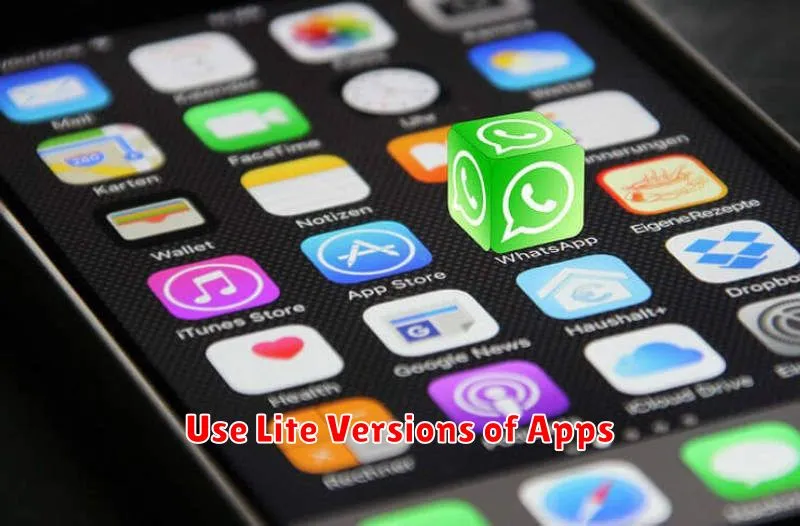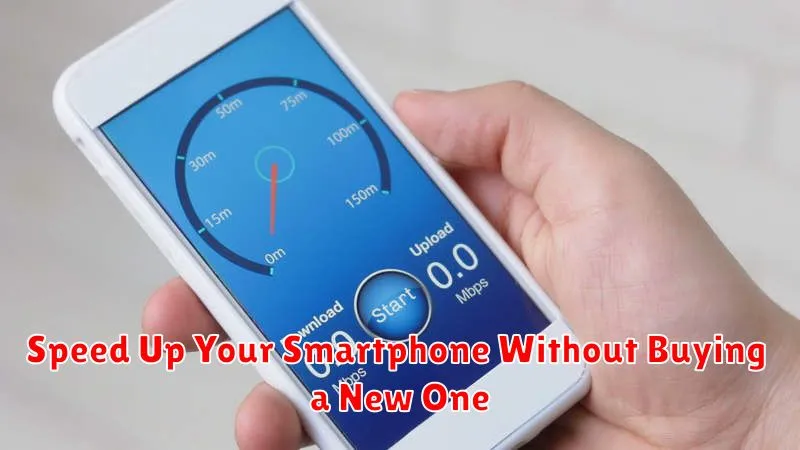Is your smartphone running slower than a snail? Don’t despair, you don’t necessarily need to shell out for a new device! This article will provide you with actionable steps to speed up your smartphone, revitalizing its performance without emptying your wallet. We’ll explore various techniques to optimize your phone’s operating system and apps, effectively giving your current device a new lease on life. Learn how to speed up your smartphone quickly and efficiently, addressing common performance bottlenecks that may be slowing you down.
From clearing out unnecessary clutter to adjusting settings for optimal performance, we’ll cover a range of methods to speed up your smartphone. Whether you’re experiencing lag, slow app loading times, or general sluggishness, the tips outlined in this article can significantly improve your smartphone experience. Discover how to regain control of your device and speed up your smartphone performance without the cost of an upgrade.
Clear Cache and Temporary Files
Over time, your smartphone accumulates cached data and temporary files from apps and websites. These files can take up valuable storage space and slow down your device’s performance. Clearing them regularly can significantly improve your phone’s speed and responsiveness.
Most smartphones offer a built-in way to clear cached data. Typically, you can find this option within the Storage or App Management settings. Be aware that clearing the cache for specific apps might require you to re-enter login information or re-customize preferences.
Clearing temporary files often involves using a built-in file manager or storage cleaner. Identify and delete files that are no longer needed, such as downloaded installation packages or files left behind by uninstalled apps.
Uninstall or Disable Unused Apps
One of the easiest ways to improve your smartphone’s performance is to remove applications you no longer use. These apps take up valuable storage space and can run background processes, consuming resources and slowing down your device.
Go through your app list and identify any apps you haven’t used recently. Uninstall these apps completely to free up the most space. For pre-installed apps that can’t be uninstalled, you may be able to disable them. This prevents them from running in the background and using resources.
Limit Background Processes
One of the most effective ways to boost your smartphone’s performance is to limit the number of applications running in the background. These apps consume valuable processing power and RAM, even when you’re not actively using them. This can lead to noticeable slowdowns, especially on devices with limited resources.
Most modern smartphones offer built-in features to manage background processes. You can typically find these settings in the “Battery” or “App Management” section of your device’s settings menu. Look for options to force stop or restrict background activity for apps you don’t use frequently. Be mindful, however, as restricting essential system apps can negatively impact your phone’s functionality.
Update Your OS and Apps
One of the easiest ways to improve your smartphone’s performance is to keep your operating system (OS) and apps updated. Updates often include performance enhancements, bug fixes, and optimizations that can significantly speed up your device.
New OS versions frequently introduce improvements to system resource management, resulting in a snappier and more responsive experience. Similarly, app updates can address performance bottlenecks and improve efficiency.
Check your phone’s settings for available OS updates. For apps, visit your device’s app store to update individual apps or enable automatic updates for seamless performance improvements.
Use Lite Versions of Apps

Many popular apps offer “lite” versions. These smaller apps are designed to consume less storage space and fewer resources, leading to smoother performance, especially on older or less powerful devices.
Lite apps are often optimized for speed, making them launch and run faster than their full-sized counterparts. They are a great solution if you’re experiencing slowdowns or have limited storage.
Check your app store to see if lite versions are available for your commonly used apps. While they may have reduced features compared to the full versions, the performance benefits can be significant.
Factory Reset as a Last Resort
A factory reset should be your last option when attempting to speed up your smartphone. This process erases all data and returns the device to its original factory settings. While effective for resolving persistent performance issues, it’s time-consuming and requires backing up all your important data beforehand.
Before resorting to a factory reset, consider less drastic measures like clearing cache, uninstalling unused apps, and updating your operating system. If these steps fail to improve performance, then a factory reset may be necessary.
Remember to back up all essential data including photos, contacts, and documents before proceeding. Once the reset is complete, your phone will be like new, offering improved speed and responsiveness.

